







| Zebra spider (Salticus scenicus (Clerck, 1757)) |








|
|
Scientific name: Salticus scenicus (Clerck, 1757) Common name: Zebra spider French name: Saltique chevronné, Saltique arlequin, Araignée zèbre Order: Araneae Family: Salticidae Size: 5 to 7 mm for females, 5 to 6 mm for males. Biotope: On rocks, on walls, on fences (rarely on tree trunks), often in sunny places. They are sometimes found inside houses. Web: No web. Spiders of the silicide family chase by looking at preys with their big size eyes. They move by jumping. Observation period: All year long but most often in May-August. Geographic area: Holarctic region. |
The Zebra spiders are black or brown and show black and white hairs drawing stripes. The cephalothorax is shiny black with two pairs of white patches. The fore edge of the abdomen is white. Then, on each side, there are two oblique-oriented white patches. There are paler forms on which the zebra pattern is less marked. Like on all jumping spiders of the silicide family there are four pairs of eyes giving a 360 degrees view. The two largest eyes, at the centre on the front, are mobile and give a good visual acuity. The similar species,Salticus cingulatus, is mainly found on trunks. The white patches on the abdomen are larger and the black marks appear rather triangle-shaped. It is sometimes difficult to tell both species apart because of variations. The white patches on Salticus propinquus's abdomen are thinner and uninterrupted from one side to the other. Salticus zebraneus is a smaller size. The dark central area on the abdomen is larger, and then, the white patches are much smaller. Males have very long chelicerae. Their cephalothorax is darker. It is quite impossible to tell apart male Salticus scenicus and male Salticus cingulatus on a picture. |
| [To know more about the Zebra spider] [Next picture] [Top] |
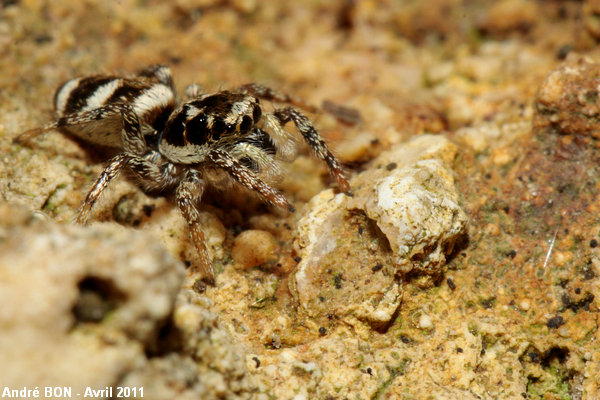
|
I have observed this Zebra Spider in my garden after having lifted a small stone. I have not seen any since. |
| [To know more about the Zebra spider] [Next picture] [Previous picture] [Top] |
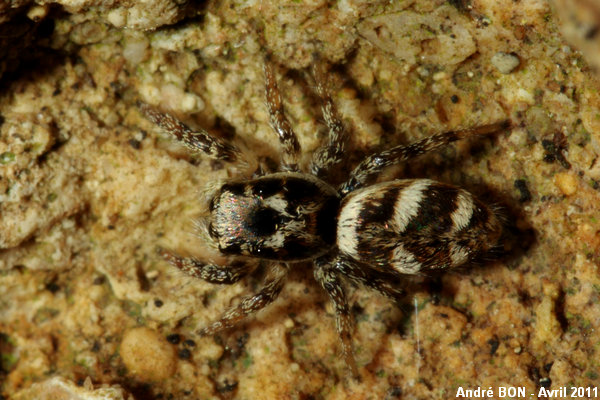
|
Upper side view. |
| [To know more about the Zebra spider] [Next picture] [Previous picture] [Top] |
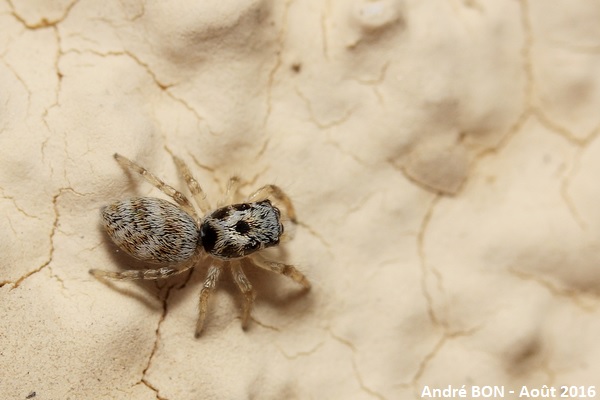
|
This specimen, observed on a wall, clearly shows less contrasted colours. I read that juveniles are paler in colour compared to adults. This is probably one unless it is only a lighter coloured form or the result of a very recent moult. |
| [To know more about the Zebra spider] [Next picture] [Previous picture] [Top] |
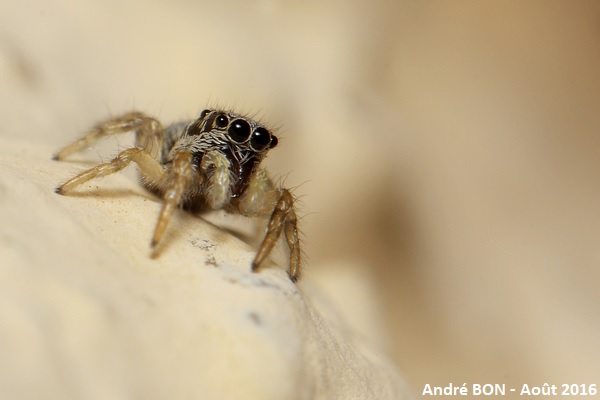
|
Front view. |
| [To know more about the Zebra spider] [Next picture] [Previous picture] [Top] |
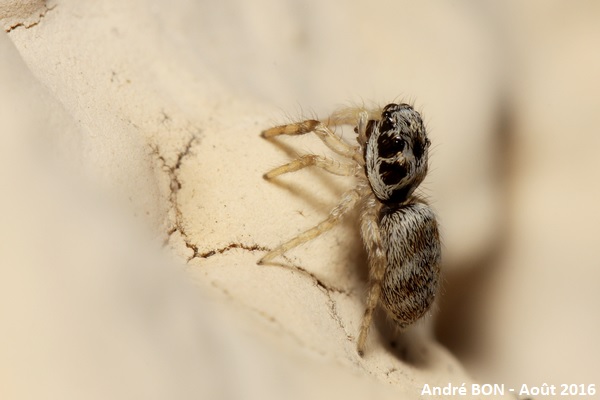
|
Side view. |
| [To know more about the Zebra spider] [Next picture] [Previous picture] [Top] |
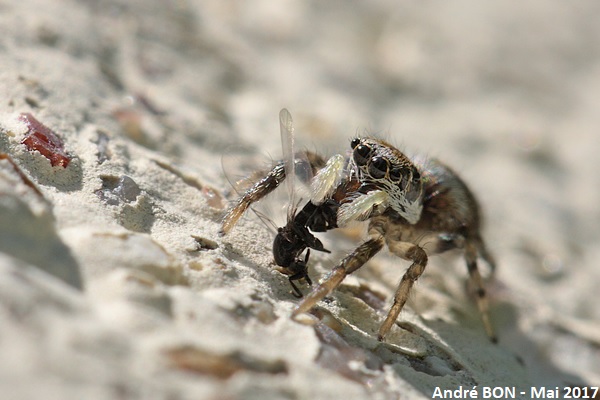
|
Zebra spider with a prey. |
| [To know more about the Zebra spider] [Next picture] [Previous picture] [Top] |
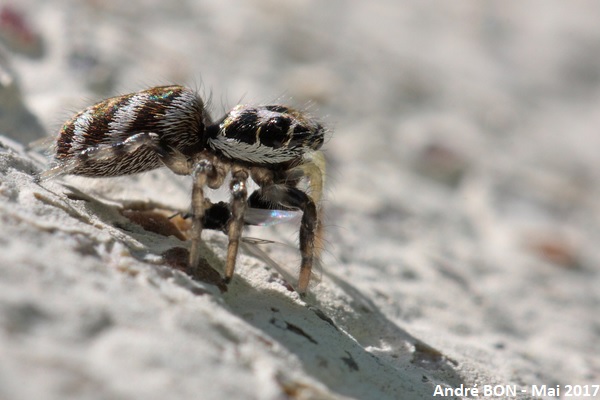
|
Side view. |
| [To know more about the Zebra spider] [Previous picture] [Top] |
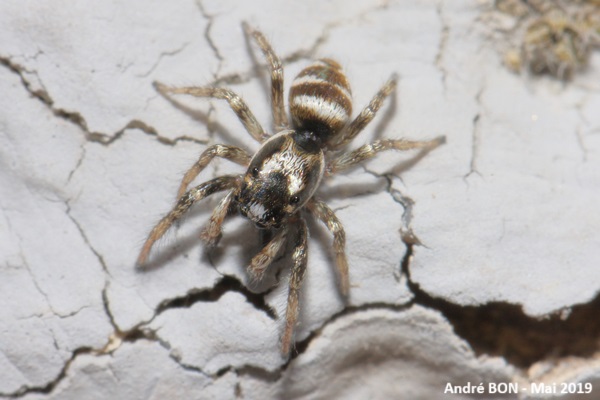
|
Now that I look more closely I observe Zebra spiders quite often. |